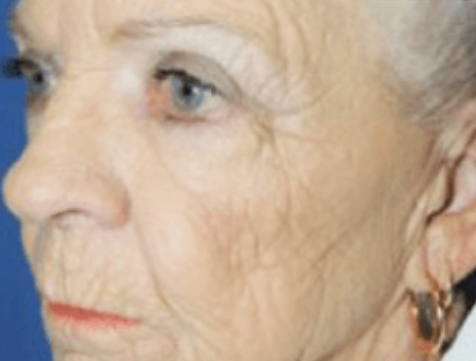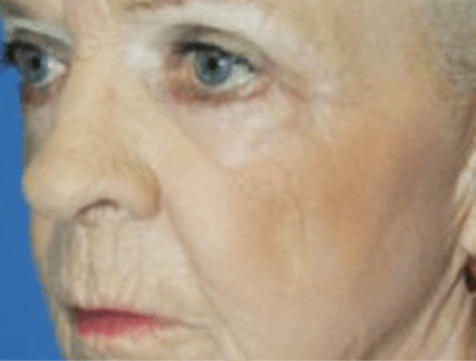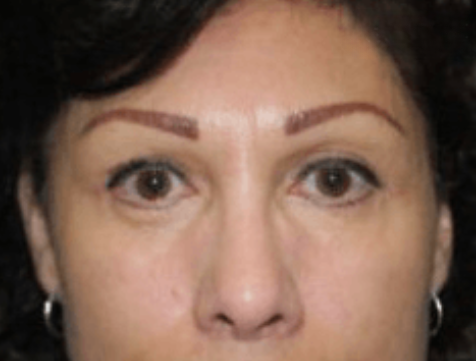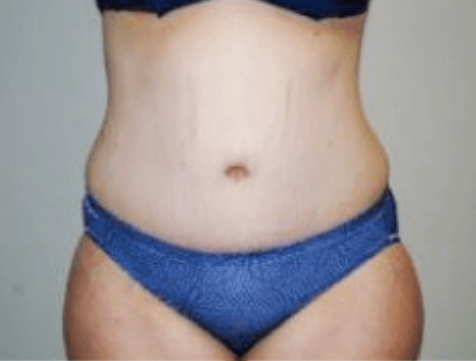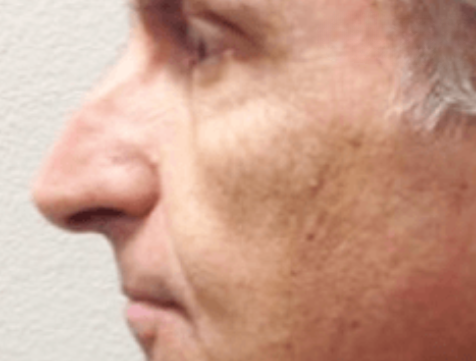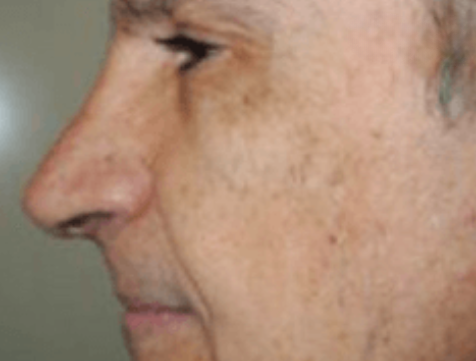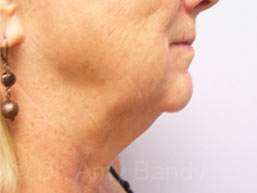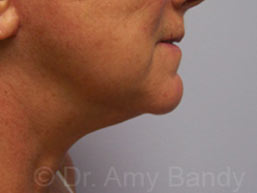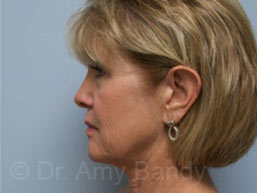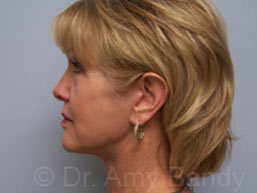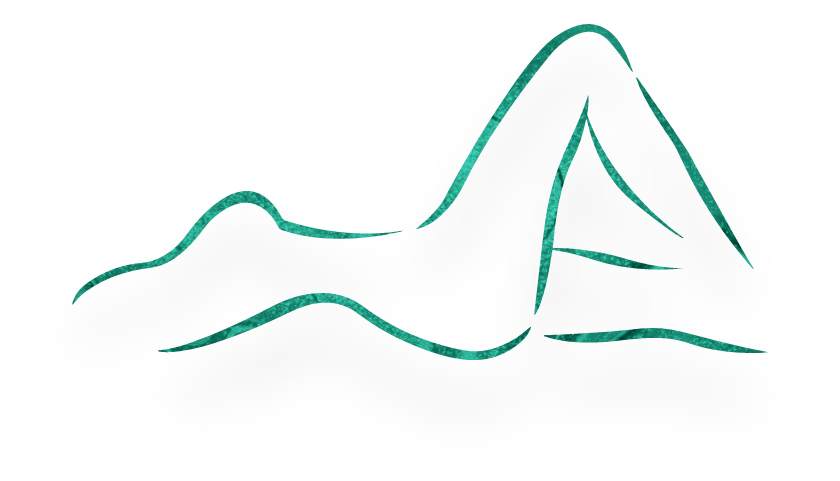Face Lift & Neck Lift
Conveniently located to serve the areas of Newport Beach, CA

Board Certified Plastic Surgeon, Dr. Bandy, uses best Facelift technique and practices. Loose facial skin, jowls and drooping muscles are corrected for a revitalized, youthful appearance. Often the neck muscles and the tissues surrounding the facial muscles must be tightened along with the skin to achieve the best results. This is accomplished through various methods of face and neck lifting. Dr. Bandy evaluates the elements involved in the aging process, and uses state of the art techniques to tailor the precise surgery to obtain the best result for each person. Facial wrinkles and skin color changes are corrected with laser resurfacing or chemical peels, depending on the skin type and degree of aging. Some wrinkles can be treated with an injection of “botox” to temporarily stop the action of the muscles producing the wrinkles. Learn more about Face Lifts and Neck Lifts at our Newport Beach, Orange County office.
Schedule A ConsultationContents
- 1 Before and After Photos
- 2 Who is Face Lift & Neck Lift recommended for?
- 3 Pre-operation
- 4 Post-operation
- 5 Costs
- 6 Recovery
- 7 FAQ
- 7.1 What is facelift?
- 7.2 How long is the facelift surgery?
- 7.3 What are the different types of facelift?
- 7.4 What type of facelift is popular?
- 7.5 What are the variations of the SMAS facelift procedure?
- 7.6 Should I try avoiding smiling or stretching the face as best as possible after facelift surgery?
- 7.7 What are mini-facelifts?
- 7.8 How much time should I take off from work for a facelift?
- 7.9 Are there any other procedures commonly performed along with facelift?
- 7.10 Are there any new technological advances or medicine for facelift?
- 7.11 What type of incision approaches are there for facelift?
- 7.12 Do I need to return for a follow-up after facelift surgery?
Before and After Photos
Who is Face Lift & Neck Lift recommended for?
Facelift surgery is recommended for anyone who sees signs of aging such as jowling or a “loose neck”. Further, anyone who is starting to get wrinkles and notices deep nasolabial folds would be a good candidate for a facelift procedure. The facelift procedure can be performed on patients of any age and if they are seeing facial aging that is bothering them. Patients as young as 30 years old have had the procedure and have been very happy with the outcome. There is no age cutoff for facelifts. Rather, the facelift procedure depends on risk factors from a health stand point of view; such discussions should be between the patient and their primary physician and plastic surgeon.
Pre-operation
How can I prepare?
Patients are advised not to eat or drink after midnight prior to day of the facelift surgery. Also, it is advised to not have alcohol intake for a minimum of two weeks before surgery. One should get adequate sleep and eat nutritiously so that you have good vitamins. Dr. Bandy has a vitamin protocol that she recommends to her patients that include arnica and bromelain, as well as vitamin c and calcium.
Will anesthesia be administered?
Although you can have a light sedation for a facelift (depending on the technique being performed), it is a lengthy surgery and typically a deeper sedation or a general anesthesia is preferred for the patient’s comfort as well as airway protection.
Is painful?
Facelift is one of the least painful procedures performed. There is a sense of tightness in the neck and jaw-line when the necklift is performed. However, very little pain or discomfort shall occur from the incision or the procedure itself. Nevertheless, narcotic pain medication is given in case patient needs it for their first couple of days right after surgery.
What if I am sick before?
If a patient is noted to be sick prior to a procedure, it is advised to contact Dr. Bandy’s office immediately to discuss the best way to move forward.
How long before I see results?
Results of the facelift will be seen within the first few days. On the day of surgery and the first post-operative day, there is enough swelling to make it difficult to tell the complete results. However, within two to three days after surgery, the swelling should subside and one would be able to start seeing an improvement.
Post-operation
Is scarring expected after?
Scars are typically very minimal and placed along the natural curves along the face. The scars are typically not noticeable and heal well. Even if the patient has a tendency to develop keloid scars, it is uncommon in the areas where incisions are made in the face for a facelift.
Can I drive home after?
It is required to have someone assist you in getting home or to your recovery center following general anesthesia. If a patient does not have anyone that can assist them at home, we do have a post operative recovery center that we work with that will pick up the patient from our facility.
Should I try avoiding touching the area after?
A patient will have sutures, staples, and/or surgical tapes covering their incisions and these will remain in place for a few weeks. It is recommended that a patient not touch the incisions until they are healed.
What activity should I refrain from after?
Dr. Bandy typically requires that her patients wait until the third day post-op before showering and washing their hair. By then, they are allowed to shower and completely wash their hair and get the incisions wet, which should not create a problem. Other post-operative care will require antibiotic ointment occasionally over the incision site to prevent infection. Besides that, there is really minimal post-operative care required. Typically, by one week post-op, the patient is able to wear makeup except for directly on the incision site. By six weeks, one can even put makeup on the incision site if needed. At about six weeks, the patient is able to get their hair dyed or permed or whatever else they prefer.
Do I need to take any medication after?
A patient is usually prescribed an antibiotic and a pain medication. If a patient is undergoing a general anesthesia, sometimes they are prescribed an anti-nausea medication to combat any feelings of nausea that some patients experience after having a general anesthesia.
Costs
What is the average cost for Face Lift and Neck Lift?
Facelift and neck lift costs vary depending on the intricacies of the surgery. During your consultation, pricing specific to your case will be provided.
What is the average cost for Tip Plasty Surgery?
The cost of a facelift will vary depending on the extent of the facelift and whether or not any other procedures are being performed at the same time. Necklifts as well any other adjunct procedures will factor into the overall cost. Therefore, the cost of a facelift can have a significant price range.
Are there financing options?
The patient has multiple financing options. For example, the patient can pay for the surgery on credit card, and make monthly payments back to their credit card. Additionally, CareCredit is a financing company specific for cosmetic surgery; patients can apply for care credit, and there are multiple options for CareCredit. Sometimes, patients opt to make payments directly to the office. This is a prepayment plan where a patient would pay until he or she pays the entire balance for the surgery; then, they would have their surgery.
Does my health insurance cover facelift surgery?
The facelift and necklift procedure is entirely cosmetic and is not covered by health insurance.
Recovery
What is the recovery time and the healing process?
The post-operative recovery for facelift will depend on the type of facelift a patient has. Recovery time will depend on how invasive and how deep the plane the facelift is. If it is more invasive and more deep plane, the recovery time will be longer. A Deep Plane Facelift can take a patient up to six months before the patient really starts to recognize their old self, because the patient will have more swelling with a Deep Plane. With a SMAS facelift or a Skin Only Facelift, there is not as deep of a dissection. Therefore, it is not as invasive of a procedure. Typically within a week to ten days, a patient can look quite well and can get the majority of the swelling down. There may be still some small residual bruising, but typically by a week to ten days, most patients are able to apply makeup and go out in public and look healed.
Is there a post-operative recovery facility that you recommend?
We do have a post operative recovery facility that we refer our patients to in Orange County, CA and Los Angeles, CA. In these situations, they will be picked up by the post operative care facility from our recovery room and brought to the recovery center where they are recovered overnight, and then brought back the next day for their follow up appointment.
We are here to listen and address your concerns.Schedule A Consultation
– Dr. Amy Bandy, Over 20 Years of Experience
FAQ
What is facelift?
Facelift, (medically referred to as “rhytidectomy”), is a surgical procedure that tightens the tissues and skin surrounding the neck and facial muscles. By removing excess facial skin, one may achieve a more youthful look.
How long is the facelift surgery?
Facelift surgery takes approximately three hours. If additional procedures are done at the same time, the surgery will take up to five to six hours. Eyelids surgery, fat transfer, and facial implants are commonly requested procedures that are performed in addition to facelift.
What are the different types of facelift?
There are several types of facelifts. There is the Deep Plane Facelift, which is where tissues (including the muscle on top of the bone) are actually elevated and repositioned. Another type of facelift procedure is called a Sub Muscular Aponeurotic System (SMAS). For a SMAS Facelift procedure, the focus is on the tissues that surround the muscle that are deep in the skin; such tissue is elevated and repositioned to provide tightening prior to closing. The skin on a SMAS Facelift is not over-stretched; this skin is merely replaced and lightly stretched to avoid the look of a facelift where you have over-stretching and irregularities around the mouth and jaw line. Lastly, another type of facelift procedure is called a Straight Skin Facelift. Unlike the other types of facelifts, a Straight Skin Facelift is a procedure where just the skin is elevated and stretched.
What type of facelift is popular?
Different plastic surgeons prefer different techniques. Also, different patients may require different types of facelifts depending on the stage of their facial aging. In Dr. Bandy’s practice, the SMAS Facelift is the most typical facelift that is performed on her patients. However, there are variations of the SMAS Facelift.
What are the variations of the SMAS facelift procedure?
One variation of SMAS Facelift is called the SMAS-ectomy. The SMAS-ectomy means that one small piece of the SMAS (Sub Muscular Aponeurotic System) is removed and the remainder of the SMAS is closed or approximated by sutures. Therefore, the SMAS is tightened in that respect. However, the SMAS-ectomy is not as invasive as a true whole SMAS procedure. Such procedure is typically indicated in patients who are in their mid 40s to 60s depending on what their facial aging shows. The full SMAS Facelift is recommended for people who have more facial aging and need more tightening of their face and jaw line. Further, there is also what is called a procedure for SMAS tightening where you only tighten the SMAS by folding it on itself.
Should I try avoiding smiling or stretching the face as best as possible after facelift surgery?
No. The patient does not need to refrain from stretching or smiling after a facelift surgery.
What are mini-facelifts?
Mini-facelifts are simply facelifts on a smaller scale. Younger patients would be good candidates for such procedures, because it involves less skin-tightening. Mini-facelifts do not require as long or as deep of a surgical incision.
How much time should I take off from work for a facelift?
Dr. Bandy normally recommends the patient to plan taking 2 weeks off. Although a patient may not need the entire 2 weeks, it is better to be conservative in the healing time.
Are there any other procedures commonly performed along with facelift?
The most common procedures performed along with facelift surgery are upper and lower eyelid blepharoplasty, browlift, lip augmentation, botox, fillers, fat transfers, and/or facial implants (cheek or chin implants).
Are there any new technological advances or medicine for facelift?
To expedite the healing process, some surgeons prefer to use a glue-like product that facilitates the skin flap re-attaching to the tissues. The substance that is used is an aerosolized fibrin glue. Such sealant acts as a surgical glue that is sprayed inside once the tissues are elevated. It is typically used for patients that may have bleeding disorders or long bleeding times, and it is not required for patients with normal history. This new advancement has been used in the more recent past (approximately over the last five years).
What type of incision approaches are there for facelift?
Incisions of facelift will vary depending on the amount of skin laxity that the patient has and the type of facelift they are going to be having performed. There are multiple places where the incisions can be placed. The incision can start either directly under the sideburns area or in the hair-line above the ear. Then, it extends down in the natural curve along the ear, and will either go in front or behind the tragus (the little cartilaginous part in front of the ear). Next, it will extend down along the ear-lobe around and behind the ear-lobe into the natural crease behind the ear before either crossing the skin to meet the hair or going all the way up behind the ear to the top of the ear (referred to as an “omega incision”). Then, the incisions are carried into the hair-line. For an alternate route going across the mid-portion of the ear down along the hairline, one can either carry it along the hairline or into the hairline. Through such an incision, one is able to do both the face and neck lift.
Do I need to return for a follow-up after facelift surgery?
Yes, patients need to follow-up after facelift surgery. The first follow-up is your first post-operative day. Afterward, you will be typically seen at approximately five days to a week. Subsequently, you need to follow-up typically at 3 weeks, and then at 6 weeks. Your post-operative photos are taken at 6 weeks, at 6 months, and then at 1 year.
